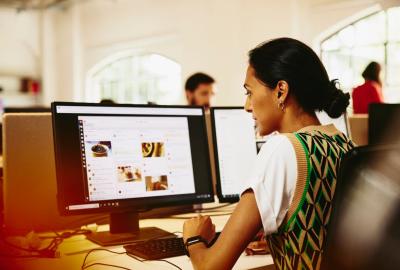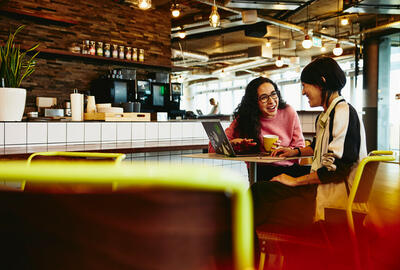how are you going to attract tomorrow’s talent?
It’s a big question with so much technological change occurring in the workplace. So, we thought it best to contact today’s students - tomorrow’s leaders - to get their view on how to attract the best talent.
Through a unique collaboration with the University of Sydney, we connected them to a panel of professors, Randstad executives and labour market specialists.
Over three months the students researched how the workplace and workforce will change to meet the expectations of the future worker. If you're looking for great talent for your organisation, contact our team of recruitment consultants.
put humans above technology
The importance put on technology must not surpass that put on people.
The students explored a number of dystopian and utopian scenarios where technology became either our master or our compatriot. From an anthropocentric view, it is clear that we would desire technology to work with us. Practically, this means incorporating new technology whilst always striving to maintain job security and re-training employees as the workforce adapts to technological advances.
Put simply, don’t just carelessly replace workers with robots, but better how your people work with the support of technology. With that, our students found that as with anything, we humans, for now, still largely decide the rate of technological adoption and thus change.
At Randstad, this is a topic that really strikes at the heart, where we believe in combining the power of today’s technology with real people’s creativity and emotional intelligence in order to create experiences that are inherently more human.
We see that the replacement of workers with technology is well established in history and with the more recent advances in machine learning and robotics, the next technological wave might exponentially increase this trend affecting also higher-skilled white-collar jobs.
In some areas automation will replace humans, freeing us up to do the things we are good at and actually enjoy. In other domains, the machines will become our collaborators, augmenting our own skills and abilities.
It will be important to focus on a new kind of partnership with machines that will build on our mutual strengths, resulting in a new level of human-machine collaboration and co-dependence.
deliver new employment opportunities
As technological innovation and the demand for flexibility is expected to become a new constant, new workforce structures will appear and present opportunities to organisations.
The team identified four key new work models and even gave them definitions that could well find a place in our future industry conversations;
genius clubs
As the working population ages and financial pressures keep mature age workers in employment, organisations will take advantage of the skills, experience, and expertise that only come with age.
cloud contracting
The students projected that organisations would begin using cloud contracting to harness the use of regional workers. With more people working away from the office, companies begin to reconsider the importance of the physical workspace. Opting for co-working spaces instead and streamlining non-core work.
protected gig
As the law catches up with technology, there will be a focus on regulating the gig economy to protect businesses and workers. The need to protect workers will also come from the bottom up. The students highlighted grassroots unionisation of gig workers already occurring and predicted a formalisation of unions.
piggyback contracting
The group sees a reaction to the demand for flexibility as a push for workers to seek collaborative working arrangements. This may involve full-time or part-time contracts to be split between two or more employees.
Responsibilities, work hours and payment are split between these ‘piggybackers’.
increase flexibility
Flexibility in the workplace is a common future of work theme. What differed with our students is how far-reaching they saw flexibility going. This ranged from the well known flexible working hours right down to “work zones”, where collaborative teams could sit together for specific topic-driven discussions. Not necessarily in the same location but facilitated through technology.
It would be imperative to create an environment where “serendipity” meetups still happen frequently.
create a progressive workspace
Our group of young people felt that to attract future talent by seeking flexible arrangements, businesses will completely change the office space. The office will become not just a real estate investment, but a tool to enhance the human capital-output of employees. Workers who feel their environment supports their work are more satisfied, motivated and productive at work.
Some notable points among many were to have as much natural lighting as possible, as much vegetation and foliage as practically feasible and to create dynamic workspaces that accommodate both private, sound-proof booths and open, collaborative spaces.
our academic partner

The scenarios created by the students are useful not only for industry but also for academia. For industry, they give an insight into what kinds of future work models our graduates will be willing to adopt and in what kinds of workplace cultures they will want to work.
For academia, they give an insight into what kind of future world our graduates want to live, in and indeed what kind of world they want to co-create.
Our joint task is to prepare our students for this complex and creative work. This industry-university partnership and joint work with students is an excellent way to do this
At Randstad, we could not agree more.



